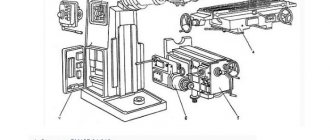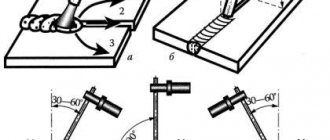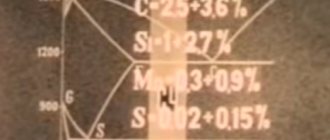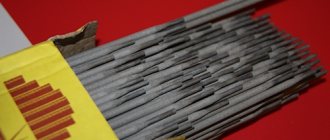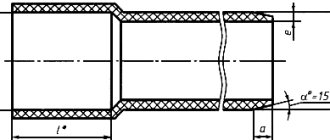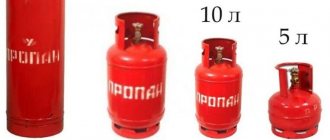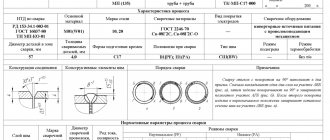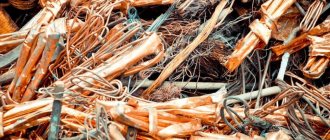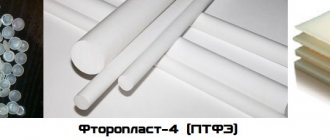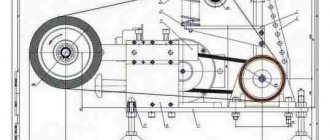What is sandpaper
Emery, sandpaper (or just sandpaper), sandpaper, abrasive or sandpaper - these are all names for the same material. This material is an abrasive on a flexible basis for manual or machine processing of various materials. There is sandpaper for metal, wood, plastic, glass. They are sometimes used for processing plaster and putty, but for these purposes a sanding mesh may be more convenient. It doesn't clog like that.
Sandpaper, sandpaper or paper, sandpaper, sandpaper - that's all about this material
Sandpaper abrasives are small particles of hard materials of varying sizes. These particles are called grains, and their size is called grit. They are glued to a flexible base. Sanding/abrasive paper-based sandpaper is more common. This is the cheapest type, but not the most durable. The fabric base is more reliable, but can stretch, which is also not always convenient when working. Polyethylene-based emery is a waterproof sanding material. This is the most expensive type, but you can even work in water. For wet processing, sanding on waterproof paper is also used.
Sandpaper is used for processing metal, wood, plastic, glass
Sandpaper is used to eliminate irregularities and defects, to obtain a smooth surface, grinding and polishing. So sanding can be rough or fine. By rough we mean the removal of paint or rust, burrs, and the initial leveling of the surface. For this work, material with coarse (from 500 microns to 1 mm or more) and medium (from 200 microns to 500 microns) grains is used. Obtaining an even and smooth surface - grinding, polishing - is already a fine or finishing treatment. For this type of work, sandpaper with fine grain (less than 200 microns) is used.
Varieties of manufacturing methods
When applying abrasive powder to a sandpaper base, two methods of arranging abrasive grains are used. The first is an open fill. In this case, the abrasive particles do not occupy all the space on the surface of the base and there remain free spaces between them measuring about the length of the grain. This arrangement of cutting grains is best suited for processing crumbling materials, since the cut particles of the material in this case easily move away from the surface of the sandpaper.
When the filling is closed, the abrasive crumb completely covers the surface of the sandpaper. Such abrasives are mainly used for processing metals. It is not suitable for sanding soft materials, because in this case the sandpaper quickly becomes dirty. Leveling the abrasive powder over the base can be done in two ways: mechanical and electrostatic. In the first case, the grain arrangement is uneven. This sandpaper is less productive, but more gentle on the surface being treated. With electrostatic leveling, the grains are placed more evenly, which creates an abrasive layer with better cutting capabilities.
Types of holders for sandpaper
When sanding flat surfaces by hand, sandpaper is usually mounted on rectangular holders. In its simplest form, it is a wooden block wrapped in sandpaper. For professional use, special holders are produced that are similar in appearance to plaster floats. They have a standard working surface width (93 or 115 mm), on which the sandpaper is fixed with two clamps. For soft sanding, a thin pad of sponge or foam rubber sealant is glued to their sole. Manual grinding of profile surfaces is usually performed without the use of tools, but in mass production, holders with curved soles are often used.
Hardness and other parameters
Circles are generally classified as soft, medium and hard; These are the main types, to which various epithets are already added. For example, the following are officially known:
- extremely soft;
- very soft;
- medium hard disks.
Additional numbers from 1 to 3 are applied to these brands. To sharpen a tool manually, you need a C1 or C2 abrasive. It is important to understand that the hardness of abrasive wheels can mean different things. In one case, this is the stability of the fastening of abrasive grains in the overall assembly (that is, the resistance of the ligaments to the ejection of grains under mechanical stress). Another is the suitability of the particles used to penetrate other materials.
According to the first option, the hardness of the discs is increased, strengthening the ligament. The total pore volume is reduced, but this does not affect the distances between abrasive particles. A 1.5% increase in bond is considered to add 1 level of hardness. Advanced bonding systems are very tear resistant. They are able to work even at a very high frequency of disk rotation - noticeably higher than the most powerful household drill can provide.
According to GOST 1972, the hardness of abrasive devices is precisely the resistance to tearing out grains under an external impulse. Testing is carried out using 3 key methods:
- according to the depth of the hole, knocked out with a stream of quartz sand;
- by the efficiency of pressing a hardened steel ball under a certain load;
- by drilling a hole to a given depth with a drill of a special design, which is subjected to stable pressure (the key indicator is the required number of turns of the drill to achieve the result).
In some cases, professionals use a TKN device (that is, a cone hardness tester). To operate, its active part is heated to 100 degrees. Then the cone is pressed into a circle. The key parameter is the depth of entry. The hardness of the disc directly affects the grinding process. The soft attachment is suitable for finishing fairly hard materials. However, peeling requires the use of more durable products. Steel that has not been hardened, as well as cast iron, can be processed with a wheel of moderate hardness.
What should the grain size be?
As you understand, different sanding cloths are used for different processing of materials. Now we are not talking about the form of release, but about the size of the grain and the method of applying it.
The type of abrasive and method of application is of secondary importance. They have a greater impact on the durability of the material. But as usual, better means more expensive. Here everyone chooses for themselves. But it is better to select the grain size for specific tasks.
What sandpaper should I use to sand wood?
To prevent the skin from clogging, the grain should be applied at intervals. This is an open type of application. In this case, you won’t have to “knock it out” or change it often.
Base type - paper or fabric. Paper is cheaper, fabric is more expensive. If you have a sander, check the instructions for it. For manual processing, you can fix the piece on a special holder or nail it to a block.
Recommendations for choosing grain size are given in the table. For primary processing, sandpaper from P40 to P80 is used. This is giving shape, removing a thick layer. We use the same materials to remove varnish and paint from wood.
To prepare wood for painting you need P100 to P240. For sanding after applying the first layer of varnish, use P360 or P400. And bringing it to smoothness - actually polishing and varnishing - is already very small P500 and above.
In general, polishing is a separate topic, and there you need to sand and apply paint or varnish step by step. And each time the grain is taken finer and finer. And the polishing is completed with a generally soft polishing (felt) material.
What kind of sandpaper should I use to process metal?
To process metal, you will have to use harder, and therefore more expensive, abrasive materials. Regular corundum will cope with aluminum and its alloys. They also process cast iron, bronze and black steel.
For brass you need at least zirconium, but preferably titanium or alloyed electrocorundum. And even better - ceramic. Please also note that the application method must be closed.
The principle of selecting the grain size is the same: for rough processing, increased “roughness” of the coarse grain; the finer the processing, the finer the abrasive. To remove rust and level out the main roughness, use the coarsest sandpaper. The thinner the layer, the smaller the grain size.
So everything is logical here. But note that for each type of work there are two or three grit sizes. This does not mean that you need to take any of the above.
This means that to get a good result you need to process each size. Although, if appearance is not so important to you, then you can use one of the recommended sizes.
Sandpaper for plastic, stone, ceramics and glass
Regarding the type of abrasive and its application, the recommendations are the same: stronger, more dense. But sanding is recommended with water supply, so a waterproof modification of the sandpaper is required.
For finishing plastic and glass, sandpaper even with the smallest grain - the same zero or P800 - will be too coarse. It will leave visible scratches.
These materials are brought to smoothness using GOI paste and even finer grinding compounds. But this is a separate story and its own technologies.
Sandpaper for wood
Wood is considered a softer material, so sandpaper should be selected differently. For processing wooden products, abrasives from:
- grenade;
- ceramics;
- aluminum oxide.
Moreover, each type is used at a certain stage of part manufacturing. Ceramics is used during the formation of the product, as it has high hardness and durability. Garnet and aluminum oxide are used at the stage of painting and leveling the surface.
For wood, choose coarse-grained paper with noticeable gaps between the abrasive particles. The base can be any and depends on the intensity of use.
Definition of grain size and its types
Grit is the ratio of the amount of abrasive material applied to a square surface of the base. This is the main indicator of the use of sandpaper. The more abrasive is placed per unit area, the smaller the grain size. And the less abrasive, the larger the crystal.
According to the grain size, sandpaper is divided into three categories:
- Coarse-grained . It is used during the initial processing of the material and cleaning it from paint and varnish. This skin has coarse and large grains. Often, coarse-grained emery is used when it is not necessary to smooth the surface, but to clean off the top layer. Sandpaper leaves deep scratches on the surface, therefore, subsequent treatment with less grainy sandpaper is required. Coarse sandpaper has numbers from 12 to 80.
- Medium grain is used for intermediate processing. It cleans and levels the surface. The material becomes smoother and more even. This type of sandpaper leaves less deep scratches than coarse-grained sandpaper. Numbers from 80 to 160.
- Fine-grained . Often this sandpaper is used at the last stage of processing to sand the surface before painting. Zero-grain emery also belongs to fine-grained sandpaper. Numbers from 160 to 4000.
Sandpaper is also classified according to the substances that make up the abrasive. Among them:
- Silicon carbide is a fairly durable abrasive. Such skins are in demand when processing products made of fiberglass, metal and plastic.
- Alumina. The material is not cheap, but the service life justifies the cost. The fragile crystals break during grinding. In their place, smaller but no less sharp particles are formed.
- Garnet is a natural abrasive. Used when sanding wood. Due to the softness of the paper, the fibers are well sealed, therefore, the paint layer on the product will lie evenly.
- The most expensive is considered to be diamond sandpaper, which is practically not subject to wear. Used in industry.
- Ceramics are required at the stage of shaping and leveling the wood. It is distinguished by increased hardness. Used in coarse types of sandpaper.
Read also: Type of compressor in a refrigerator
Tips for use
Here are some tips that will help make your work easier and extend the life of the abrasive.
Wood is processed taking into account its fibrous structure. That is, if you need to sand a log or timber, move strictly in the direction of the grain (sanding across the grain can seriously damage the material).
When sanding vertical surfaces, start working from above to avoid dusting the already sanded surfaces. So, when sanding a wall of logs, they first process the topmost log along its fibers, then the second one from the top, and so on. The surface to be sanded must be regularly cleaned of dust (preferably with a vacuum cleaner).
Only dry wood is sanded - no more than 20-22% humidity. When processing wetter wood, there is a high risk that it will warp when drying, in addition, the abrasive will very quickly become clogged with resin and wet shavings
It is advisable to carry out grinding of the log house after the shrinkage has subsided. Before work, it is advisable to de-tar the surface.
It is important to sand the wood smoothly, using even pressure to avoid waves and dents (especially important for machine sanding). It is better to work with an angle grinder at low speeds - this will help not only to better preserve the structure of the wood, but to reduce the wear of the abrasive (when working at high speeds, it heats up more and will fail faster).
The abrasive should be stored in a warm (15-25°C) and fairly dry (relative humidity no more than 35-50%) room.
In cold or high humidity it will quickly become unusable. Grinding is carried out at positive air temperatures.
Areas of use
Emery is used in many areas of production:
- Paintwork: surface treatment before and after painting.
- Construction: cleaning materials from remnants of old coating, treating plastered walls from traces of a spatula.
- Woodworking: Sanding wood to obtain a smooth surface.
- Manufacturing and repair of furniture.
- Car repair: creating a matte surface before applying primer, removing rust, sanding before applying varnish or paint.
Many people find non-standard ways to use sandpaper in everyday life. For example:
- Sharpening needles and scissors . It is enough to pierce the sandpaper with a needle several times to make it much sharper, and to sharpen the blades of scissors you need to cut the sandpaper 3-5 times.
- Cleaning joints between tiles . It can be very difficult to remove dirt with cleaning products from between the tile seams. To do this, you need to bend a sheet of fine sandpaper in half and grout.
- Updating the cutting board . Wooden cutting boards develop knife marks over time. These places can become a breeding ground for microorganisms. Using sandpaper you can sand the surface of the board.
Read also: Table of pipe and metric threads
When choosing sandpaper, you should pay attention not only to the price, but also to the characteristics:
- Grain . How to choose the right sandpaper? The types of grain for metal or wood are determined depending on the purpose of the work: removing an old layer of paint, polishing or sanding.
- Material is the basis . If leveling the surface will be done manually, there is no point in spending money on expensive products. A paper base may be quite sufficient.
So, the sandpaper must match the material that is supposed to be processed. To accurately select the right option, you should pay attention to the information indicated on the back of the sheet. If you study the basic markings, you will not have any difficulties with the choice, and you will be pleased with the quality of the work.
Contents: Hide Open
Sandpaper or sandpaper is an abrasive tool used everywhere, from small household repairs to large workshops and repair shops. This material is used to eliminate uneven surfaces of various configurations, grinding, removing burrs, corrosion and many other purposes.
The main method of classifying sandpaper is the grain size or size of its abrasive particles. It is also the main indicator for the use of sandpaper when carrying out certain works.
History[ | ]
| This section is missing references to information sources. Information must be verifiable, otherwise it may be questioned and deleted. You may edit this article to include links to authoritative sources. This mark was set on September 12, 2021 |
The first mention of sandpaper dates back to the 13th century, when in China it was made from ground shells, seeds and sand, applied to parchment using a natural glue.
Some peoples used dried skins of various fish, including shark skin, as sandpaper.
The modern sandpaper was invented by the Englishman John Oakey, the founder of the manufacturer of sandpaper and other sanding materials.
As an apprentice in a musical instrument workshop, he began making his first products by gluing sand and ground glass onto paper. Having improved the technology for mass production, he founded the business in Walworth (London) in 1833, and then moved it to Westminster Bridge Road, where he built a factory on the site of a former orphanage, the building of which was then called Wellington Mills. It has not survived to this day.
Oakey has subsequently developed dry and wet sanding papers and a range of abrasives including shoe polish, dish cleaner, furniture polish, and knife polish (the patented Wellington Knife Polish).
Sandpaper - fine-grained paper-based sheet and coarse-grained fabric-based roll
In Russia
| This section of the article has not been written. According to the plan of one or more Wikipedia contributors, a special section should be located in this place. You can help by writing this section. |
Why clean the surface after puttying?
Before considering the question of how to sand putty, you need to find out why you need to mechanically treat the surface? Finishing before applying the decorative layer consists of several stages:
- Primary stage. Includes cleaning the building base to eliminate unevenness. At this stage, do not use sandpaper, but a grinding machine. This helps eliminate large differences, but does not completely level the building foundation.
- Second phase. This includes the application of starting and finishing putty. Such manipulations eliminate defects and level the surface.
- Finishing stage. This is mechanical grinding. Allows you to eliminate unevenness of the building foundation. Cleaning also removes the marks left by the spatula from the surface. Using sandpaper and other abrasive materials is the only way to hide the boundaries between strokes and prepare the walls and ceiling for the final coat.
Sanding walls
Marking
Sandpaper markings (click to enlarge)
The variety of sandpaper today is classified into two standards. Marking is carried out in accordance with the FEPA standard, as well as the ISO 6344 standard.
The standards of both correspond to Russian GOST, which in turn is recognized by the world community. In some countries, abrasive paper is marked and produced in a special way.
Traditionally, the skin is produced in the form of sheets, called sheets, in rolls, and has the usual markings. Marking “P” is a designation of grain size. The numbers following the letter indicate the limits 12 -2500.
Take note: the higher the grit number, the finer the grains.
The State Standard of the Soviet Union indicated the value of the main indicator in microns. Since then, the classification has been preserved, which is sometimes used in neighboring countries, former republics, and in the storerooms of some zealous owners - M20, M 7, “zero”.
Sandpaper for preliminary work:
- The roughest, primary work on the surface is done using sandpapers containing a large fraction of abrasive:
- P22;
- P24;
- 80-N;
- 63-N;
- 50-N;
- Subsequent treatments are carried out using sandpaper:
- P40;
- P46;
- P60;
- 40-N;
- 32-N;
- Initial sanding requires the use of paper:
- P80;
- P90;
- P100;
- P120;
- 20-N;
- 16-N;
- 10-N;
- The final stage of grinding is carried out using sandpapers:
- P150;
- P180;
- 8-H;
- 6-N.
The gradual use of abrasive material allows you to carefully select all existing flaws, level the surface, and prepare it for finishing, which is also carried out in several stages.
Sandpaper P240
The classification of fine-grained sandpaper involves the use of tools for durable wood (oak, ash):
- primary grinding:
- P240;
- P28;
- 5-H;
- M-6;
- polishing before applying stain, primer, paint:
- P400;
- P600;
- P800;
- M40;
- 2-N.
Sandpaper P1200
Using fine-grained sandpaper for metal and ceramics:
- grinding:
- P1000;
- M20;
- 1-H;
- polishing:
- P1200;
- P1500;
- M7;
- M5;
- P2000;
- P2500 N-0;
- N-01.
The letter “P” means classification according to ISO 6344, the letters “H”, “M” correspond to our domestic marking. Numerical values indicate the size of the abrasive substance fraction.
For example, the P80 value indicates that the marking complies with the international standard, the abrasive is passed through molds measuring 80 per inch. It is not difficult for the buyer to figure out what work needs to be done with one or another tool. The reverse side will help you choose the right sandpaper for its intended purpose.
What might you need for sanding?
- Several types of abrasive mesh and sandpaper.
- Sanding beam.
- Sanding sponge.
- Lamp or spotlight.
- Stepladder or scaffolding.
- Small spatula.
- Headgear, safety glasses, respirator.
Advice! To make the grinding process less labor-intensive in the future, when filling surfaces, use a spatula of maximum width. It will leave fewer streaks behind it.
Abrasive mesh
The advantage of the abrasive mesh is its structure. During operation, dust passes through the holes and does not clog on it, as happens with sandpaper. The mesh is changed as it wears out, which can be easily determined by its external condition: it may begin to tear or if the grinding process has become less effective.
Most often the mesh size will match the size of the sanding block, so you can simply install the mesh on it and get to work. The sandpaper for the starting putty should be of size 80-100, and for the finishing putty – 220-240. The cost of the mesh is slightly higher than the price of sandpaper.
By type of abrasive
Most often, silicon carbide is used as an abrasive for the grinding mesh. However, in addition to this, other solid natural elements are also used as an abrasive. For example, the abrasive may be:
- corundum;
- emery;
- flint;
- pumice;
- diamond
Pollination of the grout mesh can be open or closed. The grains cover the surface area of the canvas by 40-60%. They are good for working with soft bases. In contrast, grinding and polishing of hard substrates requires meshes with a continuous coating of abrasive.
By grain size
Grain size is the main technical characteristic of the mesh for grouting plaster. It shows the particle size of the applied abrasive. The parameter is indicated on the packaging or on the back of the sheet material. Usually it varies from 80 to 400 and 600. The most popular parameters are sizes 120, 150, 180, 220.
The higher the abrasiveness index, the softer the material being processed should be. For example, parameters 40 and 80 are purchased for processing a starting surface with a rough structure. Grains 100 and 120, respectively, already have a smaller fraction size. Such meshes are used to prepare the base for painting or wallpapering.
Canvas numbered 180 and higher are purchased for finishing the base with further application of glossy paint. These meshes help to achieve an ideal surface; they eliminate all the imperfections left after working with rough skins. 280 and 320 – blades with fine abrasive. The smallest variety is mesh number 600. It feels almost smooth to the touch.
In modern products, the mesh grain size, according to GOST, is indicated by the marking “P” (for example, P 150). Some manufacturers use the old markings. In this case, the letter “H” means that the fraction size is indicated in tens of microns (8-H, 6-H). "M" means the size is in microns. Grids marked “M” are called zeros.
Dimensions
The standard dimensions of the abrasive cloth are 115x280 mm. The material is sold in packs of 5 and 10 pieces of the same abrasiveness. In addition, canvases with a size of 106x280 mm are available for sale. They are suitable for narrower spatulas. These nets are packed 25 pieces per pack. There are also options with a width of 110 mm.
Taking into account the abrasive, thickness, length, the material is marked, for example, like this: P 80, 106x280, P 600, 115x280 mm. Narrow meshes are often purchased to order. Other manufacturers offer customers products in rolls with different grain sizes.
This mesh option is used for large-scale work. The dimensions of the canvas are determined by the manufacturer, which is why the footage of the roll can be very diverse. The rolled type of mesh is a convenient and economical option for buyers and craftsmen who are constantly engaged in repair work.
Sandpaper
Sandpaper constantly becomes clogged with dust during work and needs to be changed more often than the mesh. In construction stores, sandpaper is sold in rolls, large pieces and small rollers. If you decide to opt for it, you should immediately decide how to cut the sandpaper with a minimum of waste in order to attach it to the block. You can purchase ready-cut pieces of sandpaper, but such a purchase will cost more.
It is recommended to use 60-100 grit sandpaper. Because sandpaper with a grit less than 60 is rough, and with a grit above 100 it will quickly become clogged with construction debris.
Overalls and protective equipment
Since the process of sanding a putty surface is quite dusty, you need to stock up on protective equipment. Must have:
- a respirator to prevent dust from getting into the lungs;
- protective glasses;
- headdress;
- It is best to wear clothes that can then be easily shaken out, so that excess debris does not end up in the washing machine;
- You also need to wear gloves: you can use rubber or cotton. The good thing about rubber gloves is that they keep out dust, which can make your hands rough.
Brands of types and sizes
One of the most popular types of grinding wheels are products based on electrocorundum in normal format. It is designated by numbers from 12 to 16 with an additional subsequent letter A. Advantages:
- excellent resistance to high heat
- excellent adhesion to binding components;
- Suitable for machining cast iron and wrought iron, conventional and chromium-improved steel.
If the type is designated as 22A-25A, there is the use of white electrocorundum. It is more homogeneous than the material of the previous group, while being somewhat stronger mechanically. Experts note the presence of sharp edges and the ability to self-sharpen. After processing with such a disk, the surface will be relatively uniform.
32A-34A are grades of chromium electrocorundum. It is suitable for handling weld surfaces made of special steel grades optimized by alloying components. Alternative names are technical ruby or electric ruby. Additionally, the following brands are available:
- 37A – electric corundum with titanium;
- 38A – zirconium circle, characterized by significant mechanical strength;
- 52-55C is black silicon carbide, which is harder than regular carbide, but often loses due to fragility.
The following markings are accepted for diamond blades:
- AC2 is the standard strength for such instruments;
- AC4 – durable products;
- AC6 – even greater strength;
- AC32 – monocrystalline diamonds.
Additionally, the following categories have been introduced into Russian standards and technical regulations:
- AC50;
- EPIRB1;
- ARK4;
- APC3.
The wear resistance of the diamond mass and its strength are achieved simultaneously with a decrease in fragility. Such structures are suitable for handling fragile as well as hard materials. Such equipment, however, can also be used for various operations with optical glass and for sharpening especially hard instruments.
Documentation
Grinding and polishing materials on a paper-like carrier or wicker base are produced in light of the requirements of regulatory documents:
- GOST 6456-82 Sanding paper.
- GOST 13344-79 Waterproof fabric sanding paper.
- GOST 5009-82 Sanding paper and fabric sandpaper and other documents.
The rules for production, grain size, and application are described. The explanation of the marking (designation) of sandpaper is given.
Designation, name
To properly use abrasive material, you need to know about its properties and purpose. For this purpose, an inscription containing information about the abrasive is imprinted on the reverse side with indelible paintwork.
Designation according to GOST: L2E700×110S1G15A25-NMA GOST4, where
Construction type of abrasive material:
L – in sheets; for roll, there is no abbreviation.
Type of media: number 1 – processing of workpieces with low hardness; number 2 – metal polishing. Polyrite fastening: E – electrostatic method. Overall dimensions of the product: sheet, – width × length in mm; roll, – width × length in m. Media: paper 0–200; L1, L2, M – moisture-resistant paper; P1–P11 – non-moisture resistant paper; S1, S1G, S2G, U1, U2, U1G – twill type fabric; P – half-thread fabric. Abrasive grade: 15A – normal electrocorundum; 24A, 25A – white electrocorundum; 43A, 45A – monocorundum; 53С, 54С, 55С – black silicon carbide; 62С, 63С – green silicon carbide; 71St – glass; 81Kr – flint. Grinding grain fraction: 25 – grain size in microns; M63–M3, – micro-grinding, size in microns. Amount of mass composition of abrasive grain: B ≥ 60%; P ≥ 55%; H ≥ 45%; D ≥ 41%. Type of binder: M – hide glue; C – synthetic binder; K – compound binder (M + C); SFK – adhesive composition based on phenol-formaldehyde resin; YAN-15 - amber resin varnish. Abrasion (defects): A ≤ 0.5%; B ≤ 2%; B ≤ 3%. Regulatory document: GOST 6456-82, nominal, non-waterproof type of base; GOST 13344-79, waterproof fabric. Factory marking: 514 – batch designation; May not be entered.
It often happens that a seemingly insignificant thing turns out to be truly irreplaceable, and its scope of application is quite wide. Sandpaper is just one of these necessary things. It is also called sandpaper or sandpaper. It is the most popular abrasive, for which there is no alternative today. Every furniture maker, mechanic, sculptor, as well as car painter and any good owner needs it.
Other abrasive characteristics
The abrasive material itself applied to the base of the sandpaper varies. Various natural and synthetic materials are used for it, the physical properties of which largely determine the scope of the material. Here are the main types:
- Silicon carbide. A widely used material, used when working with paints and varnishes, metal, plastic, fiberglass.
- Pomegranate. Natural material, mainly used for working with wood. Sandpaper with this type of abrasive is soft and elastic, convenient for processing uneven surfaces and parts with a complex surface configuration.
- Ceramic abrasive. Highly hard material, often used in shaping products.
- Alumina. Resistant abrasive, valued due to its long service life. An important quality of this type of paper is the formation of new cutting edges when the old layer is abraded.
The marking and roughness of sandpaper is regulated by domestic and foreign standards. Today there are three standards - Soviet, Russian and international. In the Soviet GOST 3647-80, marking is determined by the number of grains per square inch. New products are marked in accordance with ISO 6344, which corresponds to Russian GOST 52318-2005.
The table below for the grain size of the skin will help you understand the compliance of the old and new standards.
As you can see, the main difference lies in the direction of movement of the numbers in the markings. In the old guest, the values of grain size and density decrease. In the international classification, the number of the skin increases as the grain size decreases.
Peculiarities
The principle of operation of the emery is to remove the top layer of the workpiece. Abrasive chips work like thousands of small cutters, allowing you to shape the material into the desired shape, sand it, remove burrs and defects, or polish the surface. The peculiarity of working with wood is that, on the one hand, effort is required for grinding, but at the same time, almost any impact leaves a mark, and it can be difficult to achieve a smooth surface. Moreover, painting or varnishing does not hide defects, but emphasizes them. Additionally, processing is complicated by the fact that different areas of the tree have different densities and require different pressure.
Therefore, the technology of step-by-step sanding with several types of sandpaper is used for wood - from coarser to softer. Coarse sandpaper at the initial stage allows you to minimize sanding efforts and quickly remove the top layer. And each subsequent one removes too strong scratches and unevenness after the previous one, allowing you to achieve smoothness and shine.
Sanding will not only give a finished and aesthetic appearance to any wooden surface, but will also allow for better protection of the material - protective compounds, water- and fire-retardant impregnations are better applied to the sanded surface.
Therefore, grinding is a necessary stage of all work:
- during restoration, the old layer of paint and the top (damaged) layer of material are removed;
- when leveling the floor, walls and other surfaces, unevenness is eliminated;
- to prepare the material for painting and treatment with protective compounds, the structure of the tree, its “pores” are opened;
- intermediate processing during priming and painting is necessary to smooth out unevenness of the applied layer, lumps of paint, and eliminate adhered particles;
- polishing the final coatings (paint, varnish) allows you to eliminate the smallest defects, micro-scratches, achieving ideal smoothness, shine and protection of the wood.
Sandpaper allows you to work on wood either manually or using special sanders (belt, eccentric, angular) or polishing machines. For manual processing, paper is available in sheet, strip and roll formats. For machines, abrasives are made in the form of belts, disks or flap wheels.
If for manual processing you can choose a sheet of any convenient size, then the consumables for the equipment should match the size of the sole or be slightly narrower. For a tape machine, not only the width is important, but also the length. For example, running sizes are 100x610, 30x533. If the sheets have holes for dust removal, they should match those on the base of the machine.
These are 7 or 6 alphanumeric symbols.
- Type of base. It is designated in the 2nd alphanumeric group. Most often this is paper (denoted by the letter K), fabric (P), polyester (X) or a combined base (C).
- Base density - letter designation in the 5th position (A - thin paper up to 85 g/m2, E - especially flexible fabric, X - rigid fabric, etc.).
- For waterproof skins, the letter W is indicated in the 6th position; for non-waterproof skins, nothing is indicated.
- The method of connecting the abrasive to the base is indicated in the 3rd position. For low mechanical loads, an abrasive secured with a single layer of glue (2) is suitable. A more reliable and wear-resistant skin has two layers of waterproof polymer resin (1) or a double layer of “glue + resin” (3).
- Type of material application - in group 5. For wood, open application (designated 1), stearin application (3), open application stearin coating (4) are best suited - they are less clogged with chips.
The most important characteristics are the type of coating (indicated in the 1st group) and the degree of grain (the last group). Let's look at them in more detail.
How to properly sand walls after puttying, surface cleaning methods
Wall grinding technology
At the first stage, use a spatula to go over the entire surface of the wall. Remove tubercles, all kinds of protrusions, and swellings. If you find large depressions or pits, fill them with putty, do not try to remove them by sanding.
Start sanding only when the surface is completely dry.
High-quality lighting should be installed on one side at an angle to the surface. Its position must not be changed during the entire grinding cycle.
The second stage involves treating the surface with coarse sandpaper or sanding mesh. The consumable material is attached to the sanding block.
Surface grinding is carried out from top to bottom, processing small areas with rotational movements. The size of the plot should not exceed 1×1 m.
It is better to grind from top to bottom in strips no wider than 1 m. When grinding, hand movements are made in a circle, but you can also move up and down or left and right.
Do not press hard on the tool or grind for a long time in one place. You can erase the entire layer of putty.
After going through the entire surface with a coarse abrasive, continue sanding with fine sandpaper. When using finer sanding material, be sure to bring the light source as close to the wall as possible.
Finishing grinding is performed with less sweeping movements and with less pressure on the tool.
Hard-to-reach places are sanded using sanding sponges or the old-fashioned method of adding sandpaper in several layers.
Never use a skinner to clean corners and hard-to-reach places. You will only ruin the surface.
Select the correct grit size of consumables. Properly selected sandpaper should not leave deep scratches on the plaster.
If the abrasive material leaves scratches, choose a finer sandpaper. Under the wallpaper, minor scratches are allowed on the polished surface after puttying. But before painting, the surface of the walls must be absolutely flat. Read how to prepare a wall for painting.
The grinding process is labor-intensive and requires considerable effort to complete. It can be mechanized if you use a special grinding machine. Grinding machines are available that can be connected to a vacuum cleaner, which makes the grinding process virtually dust-free.
Do not use belt sanders. They are suitable for working with wood. An eccentric or orbital sander will work.
Although the use of a grinding machine speeds up the grinding process, it is very difficult for a novice builder to obtain a high-quality sanded surface without special skills.
It is necessary to feel the tool not only to move it correctly, but also to regulate the force of pressing the tool on the plane being sanded. And such a tool is quite expensive.
After sanding, remove the dust layer, do a wet cleaning and check the quality of the surface. Before finishing, a layer of primer must be applied.
Video review of types, features and rules for using sandpaper
Types of sandpaper
So, modern sandpaper for wood differs in the following characteristics:
- abrasive;
- Purpose;
- Method of applying abrasive;
- Grain;
- Place of manufacture, since some of its performance qualities depend on this;
- Water resistance.
Below we will take a closer look at all its types.
Pomegranate sandpaper
Types of abrasive
Natural emery is the result of mixing magnetite with corundum. However, in modern conditions these materials are practically not used. The most common types of abrasives are:
| Type abrasive | Peculiarities |
| Electrocorundum | The toughest type of skin, which has excellent cutting ability and resistance to pressure. This abrasive is produced by reduction smelting in a charge. |
| Silicon carbide | It is very sharp, but at the same time fragile grains that crumble under pressure. This abrasive is obtained from an alloy of graphite and silica. This type of skin is often used for processing metal and plastic. |
| Pomegranate | A rather fragile abrasive, but at the same time allowing to obtain a perfectly smooth surface. Therefore, it is often used for wood processing. |
| Diamond | It is the hardest and most durable type of abrasive, but at the same time its price is very high. Therefore, this sandpaper is not used for processing wood. |
Silicon carbide skin
Application technology
Some performance properties of the skin depend on the method of applying the abrasive.
Currently, the following methods are most often used in production:
- Mechanical application - under the influence of gravitational forces, particles are applied in a chaotic order to the canvas.
- Electrostatic method - negatively charged particles in an electrostatic field are attracted to the adhesive base. The peculiarity of this method is that the sanding layer is very sharp.
- With the help of binders - a material that is more durable than an abrasive serves as a binder between the blade and the sanding layer.
- Using adhesives and resins - often the latter have anti-dirt and antistatic additives that increase the durability of the skin.
In the photo - coarse sandpaper
Grain
Based on the density of grains per square inch, or, more simply, the grit size, sandpaper is divided into the following types:
| Grain | Application area |
| 40-60 | Large grains located far from each other. This type of sandpaper is used when performing rough work. |
| 80-120 | Used to remove minor irregularities. Therefore, such sandpaper is also called smoothing sandpaper. |
| 150-180 | Used for finishing. |
| 220-240 | Used for grouting before painting. |
| 280-320 | Great for removing marks before painting. |
| 360-600 | Used for grinding. |
Thus, when choosing which sandpaper to sand wood, you should focus on the type of processing. However, in any case, fine sandpaper is not used for processing wood, as it quickly becomes clogged.
Marking
The marking depends on the country in which the sandpaper is made, since each country has its own system-forming basis.
The following foreign groups are distinguished:
- Japan;
- USA;
- Canada;
- China.
In addition, there is a generally accepted FEPA standard, which corresponds to the Russian standard. This system is based on the designation of the number of grains, which can be from 12 to 5000. The more grains, the less grainy the skin is.
For example, sandpaper P22/24/36 is intended for roughing, as it contains large grains, and wood sandpaper grade P240/280 is used for sanding wooden surfaces. Sandpaper grade P2000/2500 is used for polishing paint and varnish coatings.
Waterproof skin
Water resistance
Another important parameter of the skin is water resistance. It should be noted that moisture-resistant sandpaper is often used for woodworking in industrial settings, in particular for making furniture.
This consumable also has increased elasticity due to the use of a fabric base and special resins. Experts recommend soaking it in water for some time before using it. However, it should be borne in mind that the instructions for using sandpaper largely depend on the type of operation being performed.
Waterproof sandpaper is sold in grain sizes ranging from P80 to P2000. Those. it can be used at all stages of surface treatment.
Here, perhaps, are all the main types of sandpaper, after familiarizing yourself with which you can choose the most suitable sandpaper for performing certain types of woodwork.
Types of abrasive
There are several most common materials that serve as raw materials for the manufacture of abrasive powder:
Pomegranate
. This abrasive is a natural mineral, therefore it is absolutely environmentally safe for humans. The natural structure of the particles allows this sandpaper to be used effectively for processing all types of wood.
Silicon carbide
characterized by high levels of hardness and strength. This type of sandpaper is used for grinding metals, fiberglass and other materials that are characterized by increased hardness.
Ceramic-based abrasive
used to form the surface and eliminate large defects during primary wood processing, polishing parquet, etc.
Aluminium oxide
It is quite fragile, so during the grinding process the crystals can crumble, forming new cutting edges instead of dull ones. This feature significantly extends the service life of the abrasive cloth.
There are other fillers, but they are quite rare and are used for special processing.
Considering the availability and low cost of sandpaper, we can say with confidence that no competition will threaten it in the near future. The versatility and ease of processing, as well as the variety of materials processed, make the abrasive cloth indispensable both in everyday life and in industrial conditions.
Designation of abrasive and grit
It is most convenient to present and analyze the grain parameters of disks in the format of a special table. But here it must be said that these parameters may differ in different gradations, and sometimes it is impossible to find a correspondence. Thus, the categories of processing abrasives F4-F7 on the FEPA scale have no analogues. Grains 3/2 according to standard number 9206 dated 1980 and less do not have matches in standard 3467-80. Here is the table itself:
| Sign according to GOST 3647-80 | According to GOST 9206 from 1980 | Dimensions in microns | FEPA abrasives, except those with a flexible backing (the letter F is omitted from the designation) | Average value in microns |
| 200 | 2500/2000 | 2500-2000 | 8, 10 | 2460, 2085 |
| 160 | 2000/1600 | 2000-1600 | 12 | 1765 |
| 125 | 1600/1250 | 1600-1250 | 14 | 1470 |
| 100 | 1250/1000 | 1250-1000 | 16, 20 | 1230, 1040 |
| 80 | 1000/800 | 1000-800 | 22 | 885 |
| 63 | 800/630 | 800-630 | 24 | 745 |
| 50 | 630/500 | 630-500 | 30,36 | 625, 525 |
| 40 | 500/400 | 500-400 | 40 | 438 |
| 32 | 400/315 | 400-315 | 46 | 370 |
| 25 | 315/250 | 315-250 | 54, 60 | 310, 260 |
| 20 | 250/200 | 250-200 | 70 | 218 |
| 16 | 200/160 | 200-160 | 80 | 185 |
| 12 | 160/125 | 160-125 | 90, 100 | 154, 129 |
| 10 | 125/100 | 125-100 | 120 | 109 |
| 8 | 100/80 | 100-80 | 150 | 82 |
| 6 | 80/63 | 80-63 | 180 | 69 |
But simply determining the grain size of sanding and other discs is not enough. It is also necessary to look at what this classification means in purely practical terms. In descending order of size there are:
- grinding;
- grinding powder;
- micropowders;
- the finest possible micropowder.
Micropowders are designated by the symbol “M”. The index is not difficult to decipher. The number after the “M” shows what the largest particles are in this type of product. It is worth noting that, in addition to the main fraction, at each grain size number even larger, marginal, fine and complex fractions are clearly distinguished.
Large grains are designed for rough finishing of various types of coatings. The smaller cross-section allows for a final abrasive pass. It can also be used for finishing and sharpening. Coarse-grained discs are used to:
- peel and remove allowances with a significant cutting depth;
- work effectively on powerful machines;
- grind materials that close the pores of tools and provoke “salting”;
- work over large areas;
- grind the end flat;
- process products internally.
Wheels with small and medium grain are needed if:
- a coating roughness of no less than 0.08 and no more than 0.32 microns is relevant;
- you will have to work with hardened steel and other hard metals;
- grind and bring devices (devices) to final readiness;
- accurately and efficiently work on a variety of details.
Grit index
The main indicator that is taken into account when choosing is the number of paper corresponding to its abrasiveness. The number indicates the number of abrasive particles per square inch of material. The greater the number of abrasive grains placed per unit area, the smaller they are and are suitable for finer operations. Based on the number of particles per square inch, sandpaper is divided into three main categories:
- Large. Marked with numbers from 12 to 80. Mainly used for rough processing of wood, metal and other materials, as well as for removing varnish, paint and rust. When processed, it leaves deep furrows and requires further processing with smaller sandpaper.
- Average. The abrasiveness index ranges from 80 to 160. Mainly used for processing wooden parts, finishing surfaces after rough processing.
- Small. The number of abrasive particles is from 160 to 1400 per square inch. Used for surface finishing, grinding and polishing.
The sandpaper grit table below allows you to more accurately select the paper in accordance with the planned work.
Sandpaper grit
This parameter of abrasive paper displays the number and size of particles of abrasive substance per unit area, is the main characteristic of the sandpaper and determines the possibility of its use for certain needs.
What's the difficulty?
Today in stores you can find sanding paper marked both according to Russian GOST and the standards of other countries.
The confusion is that domestic markings on the skin can be made according to the new GOST of 2005 (focused on European standards) and according to the GOST of the 80s, approved by the Ministry of Machine Tool and Tool Industry of the USSR.
In addition, there is no unity among global manufacturers. The USA and Canada, Europe and Türkiye, Japan, China adhere to their own standard.
Table of grain size, purpose and marking
| GOST R 52381-2005 (Russia) | GOST 3647-80 (USSR) | Grain size (µm) | Purpose |
| Coarse-grained | |||
| P22 | 80-H | 800-1000 | Roughing |
| P24 | 63-H | 630-800 | |
| P36 | 50-H | 500-630 | |
| P40 | 40-H | 400-500 | Rough woodwork |
| P46 | 32-H | 315-400 | |
| P60 | 25-H | 250-315 | |
| P80 | 20-H | 200-250 | Primary grinding Surface smoothing Removing small irregularities |
| P90 | 16-H | 160-200 | |
| P100 | 12-H | 125-160 | |
| P120 | 10-H | 100-125 | |
| P150 | 8-H | 80-100 | Preparing hard wood for sanding Final sanding of soft wood Sanding old paint for painting |
| P180 | 6-H | 63-80 | |
| Fine-grained | |||
| P240 | 5-H,M63 | 50-63 | Final sanding of hardwood Sanding between coats |
| P280 | 4-N,M50 | 40-50 | |
| P400 | M40/N-3 | 28-40 | Polishing final coats Sanding before painting Wet sanding |
| P600 | M28/H-2 | 20-28 | |
| P1000 | M20/H-1 | 14-20 | Grinding of metal, plastics, ceramics Wet sanding |
| P1200 | M14 | 10-14 | Even finer grinding, polishing Removing gloss, stains, micro-scratches |
| P1500 | M10/N-0 | 7-10 | |
| P2000 | M7/N-01 | 5-7 | |
| P2500 | M5/N-00 | 3-5 |
Russian marking. GOST old and new (ISO)
The letter “P” is always indicated first. The number after indicates the grain size.
Old GOST
The first number is the number indicating the size of the abrasive. Next come the indices: P means that the amount of the main fraction of abrasive grain is at least 55%, index H is at least 45%, index D is at least 41%.
To designate micro-grinding powders in the old GOST, the first letter is M. The number behind it is the grain size in microns.
This is what the back side of the sandpaper I purchased just yesterday looks like:
(Below I posted a photo with the new markings)
Areas of application of abrasive skins in accordance with the type of grain size.
Sandpaper with coarse grain (coarse-grained - macrogrid)
- The roughest jobs. Removing burrs and rust. (grain 1000 microns - 500 microns)
New GOST: P22, P24,P30, P36 (hereinafter the sequence is given in order of decreasing grain, i.e. P22 is the largest grain (1000 microns), P36 is the smallest (500 microns))
Old GOST: 80-P, 63-P, 50-P (hereinafter in order of decreasing grain, i.e. 80 is the largest grain (1000 microns), 50 is the smallest (500 microns))
- Rough woodworking. Pre-grinding of various surfaces (500 - 250 microns)
New GOST: P40, P46, P54, P60
Old GOST: 40-P, 32-P, 25-P
- Removing a layer of varnish, paint or drying oil. Elimination of uneven plaster. Intermediate grinding (250 - 100 microns)
New GOST: P70, P80, P90, P100
Old GOST: 20-P, 16-P, 12-P, 10-P
- Final sanding. (50 - 105 µm)
New GOST: P120, P150, P180, P220
Old GOST: 20-P, 16-P, 12-P, 10-P
Grain
The most important characteristic of sandpaper, which is responsible for cutting properties, is grain size. The indicator indicates the size of the abrasive grain. For example, for preliminary operations a fraction of 0.8 is used
1 mm. Finishing, indicators do not exceed 3
The volumetric value of the abrasive material is regulated according to the international standard ICO 6344. In the Russian Federation, GOST 52381-2005 is in force. According to the requirements, sandpaper numbers are indicated by the letter P with digital accompaniment 12–2500. The indicator corresponds to the number of wires per 25.4 mm (English inch). That is, the more cells per inch, the smaller the output grain size during calibration.
On the territory of the country, the old designation is found, from the times of the USSR, according to GOST 3647-80. Grain size is indicated in microns. The minimum value for the group is accepted, for example, 16-H, 8-H. In the fine-grained category, the letter M is used. “Nulevka” is one of the finest sandpapers (M40), popular among motorists.
Application and grain size:
| Types of jobs | GOST 3647-80 | ICO 6344 GOST 52381-2005 | Grain size, microns |
Primary (grinding) cutting stage
Pre-processing operations
Initial cutting stage
Processing fragile wood, stripping old paintwork
Sanding hardwood, adjacent surfaces
Polishing, processing before painting
Processing of metal, plastic, ceramic workpieces, wet processing
Finishing stage of fine grinding, polishing operations
Sandpaper is classified by grit. This is necessary for the correct preparation of the technological process and the stages of operations.
Abrasive
Since ancient times, quartz sand and natural glass, volcanic obsidian, were used as grinding materials. Small particles stuck to the skin. Hence, another popular name is sandpaper.
- Electrocorundum. An artificial material based on Al2O3 (aluminum oxide). Has sharp and hard edges. Has high cutting ability. To improve technological performance, the substance is doped with various additives, which can be identified by color:
- White – aluminum oxide content within 99%.
- Ruby hue - chromium oxide introduced.
- Gray-blue color scheme – saturation with titanium oxide.
- Shades of brown, – normal electrocorundum with Al2O3 content 91
96%.
Read also: Do-it-yourself zigzag UHF antennas
Less common substances - diamond, elbor, garnet and others are less commonly used due to their high cost and low availability.

